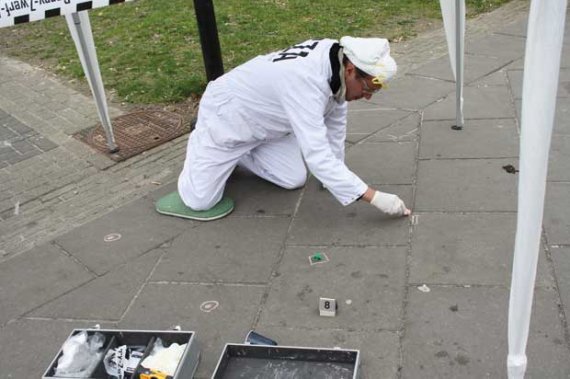At present, such questions ultimately have to be solved in the lab. But there is an alternative. In future the officer on duty will simply pull his hyperspectral camera out of his bag, take a couple of pictures, upload the information online and get all the answers instantaneously, without even having to touch the blood. This scenario is still some way off but it is not science fiction. The technology is there. The principle works, says Saskia van Ruth of Rikilt. She took part in research by PhD student Gerda Edelman at the AMC teaching hospital in Amsterdam on using near-infrared spectroscopy to analyse blood splatters. Chemical methods for identifying blood have been available for a long time but they all have one big drawback: you have to take samples. Analysing the samples is lab work and that costs time. Spectroscopic analyses do not have that drawback. Visible light can be used to identify blood splatters on a light background but that method does not work for a dark background as dark colours absorb too much light themselves.
Powerful weapon
The analyses by Rikilt/AMC show that infrared light does not have that snag. Focusing on a certain part of the infrared range (1150-2500 nm) enables the surface the bloodstain is on to be filtered out. It is then possible to distinguish between blood and e.g. wine, lipstick, ketchup or coffee with one hundred percent confidence. But infrared technology can do more than that, as it allows fairly accurate estimates of how old the blood is. That is because the blood’s chemical composition changes over time. The oxyhaemoglobin in the blood oxidizes in the air. This change can be traced clearly using near-infrared light up to at least two months after the blood was spilt. In theory this means the police have a powerful new weapon but in practice there is some way to go. Van Ruth: ‘This is the scientific proof, the proof of principle. The method is feasible.’ But it is not available for use straightaway; much more research is needed first. For example, does the method work on a perpetrator or victim who smokes or is on medication? And what effect do light, air and humidity have on spilt blood?

